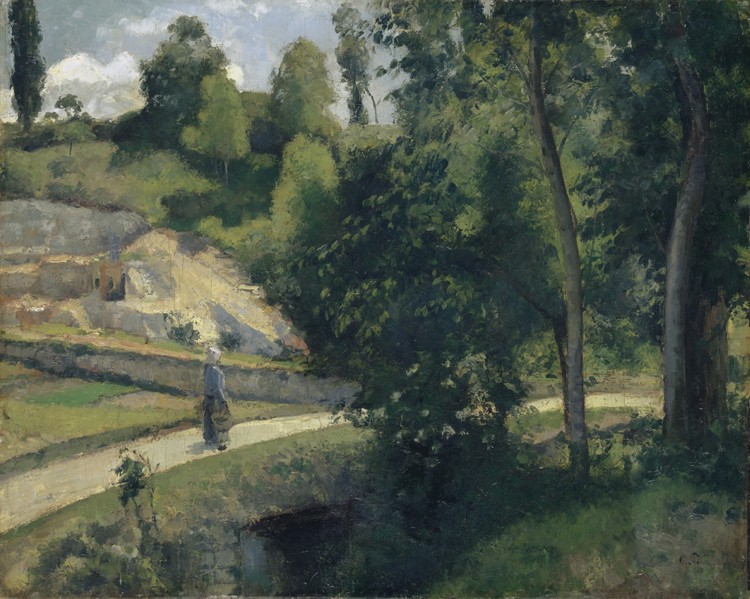
Camille Pissarro, Quarry, Pontoise, c. 1874. Oil on canvas, 22 7/8 x 28 1/2 in. The Rudolf Staechelin Collection © Kunstmuseum Basel, Martin P. Bühler
On view in Gauguin to Picasso: Masterworks from Switzerland, Camille Pissarro‘s Quarry, Pontoise is a lush, peaceful scene. After the Franco-Prussian War, the artist moved from Louveciennes to Pontoise in the rural Oise Valley, where he lived from 1872–82. He chose the hamlet of l’Hermitage for almost his entire stay, inspired by its streets, fields, and countryside. Here, Pissarro shows a woman with a basket walking past a quarry on the arcing path of the rue de l’Hermitage, which leads to the Saint-Antoine ravine. In this area 25 miles northwest of Paris, Pissarro painted side-by-side with Paul Cézanne from 1872 to 1874. Both artists greatly admired and influenced each other. Cézanne claimed to be a pupil of Pissarro and stated: “Perhaps we all come from Pissarro.”

